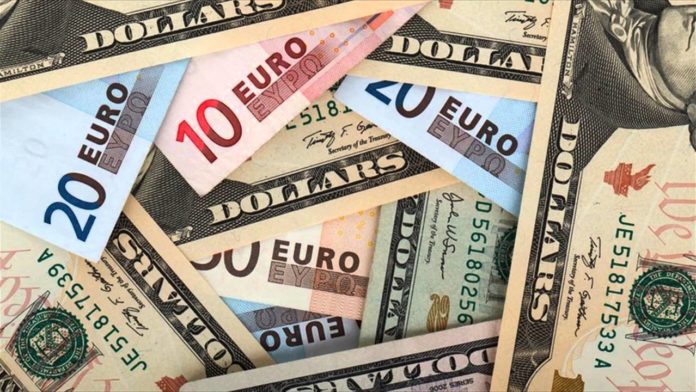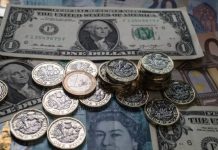
SINGAPORE: The dollar weakened in Asia on Tuesday as U.S. Treasury yields fell to three-month lows, with investors fretting over a possible pause in the Federal Reserve’s rate-hike cycle and portents of recession seen in a yield curve inversion.
The U.S. 10-year Treasury yield fell to 2.94 percent on Tuesday, its lowest level since mid-September. The difference in yield between the U.S. 2-year and 10-year tightened to its smallest since July 2007.
The curve between 3-year and 5-year notes inverted for the first time since 2007 on Monday and was last at minus 1.2 basis points.
The 2-year and 10-year yield curve is a key focus for investors as an inversion is seen as a predictor of a U.S. recession.
A yield curve is said to be inverted when yields on longer-dated maturity bonds are lower than shorter-dated bonds.
The yield curve has flattened as continuing interest rate hikes send short-dated yields higher, while longer-dated Treasury yields are kept down by tepid inflation and slowing global growth.
The dollar index, a gauge of its value versus six major peers, was off 0.23 percent at 96.8.
The weakness in the dollar comes against the backdrop of a temporary truce in the US-China trade conflict, which has bolstered investor confidence in riskier currencies versus the safe-haven greenback.
The dollar had been supported for most of 2018 by a robust U.S. economy and a relatively hawkish Fed, which is widely expected to raise its policy interest rate later this month.
Markets have priced in an 87 percent probability of a rate hike at the Fed’s Dec. 18-19 meeting.
The dollar came under pressure last week when the market took comments from Fed Chair Jerome Powell as signalling a slower pace of rate hikes.
A more dovish tone from the Fed last week has led markets to question how many times the central bank will hike rates in 2019.
Currencies such as the Chinese yuan, which were battered in the US-China trade war, are expected to trade stronger versus the greenback in the coming weeks as investor sentiment improves.
The dollar fell 0.5 percent against the offshore yuan to 6.8375. On Monday, it lost 1.07 percent, its steepest percentage fall since Aug. 25.
However, he warned that markets need to see a further easing in trade tensions for the risk-on rally to continue.
The Australian dollar benefited from the broad-based dollar selling, gaining 0.2 percent in Asian trade at $0.7368. The Reserve Bank of Australia kept its policy cash rate unchanged on Tuesday in a widely expected move.
The yen traded at 113.05 to the dollar, with the greenback losing 0.5 percent versus the Japanese currency.
Elsewhere, sterling was gained 0.2 percent to trade at $1.2744 due to broad dollar weakness.
On Monday, the pound fell below $1.27 for the first time since Oct. 31.
Sterling has posted losses for three consecutive weeks as traders bet that British Prime Minister Theresa May will not be able to pass her Brexit deal through parliament on Dec. 11.






